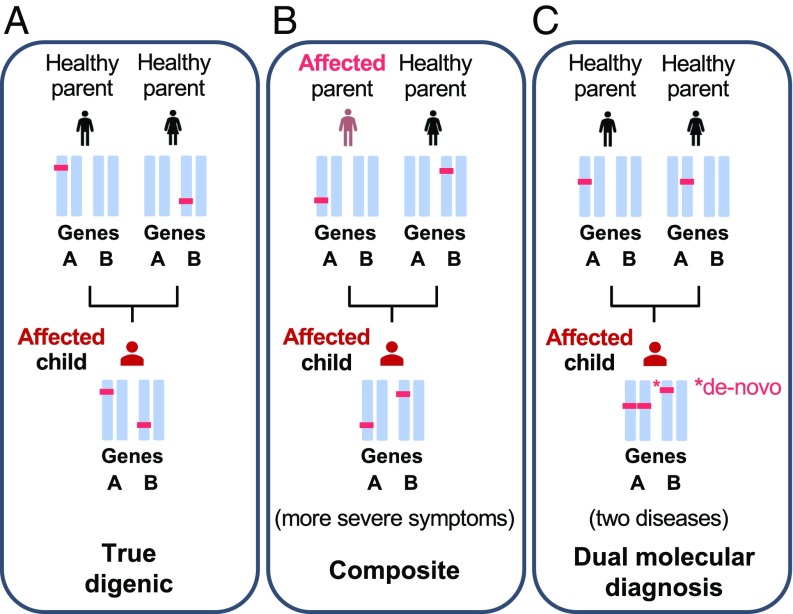Fig. 1.
Examples of different cases of disease-causing bilocus variant combinations present in an individual, and which can be detected by the VarCoPP. (A) “True digenic” case, where mutations on both genes should be present to trigger any symptoms of the disease. Individuals with the mutation in either one of the two genes remain unaffected. (B) One example of a “composite” case, where one mutation at the most deleterious gene can be sufficient to show disease symptoms (affected parent), but the second mutation affects the severity of symptoms or the age of onset. (C) One example of a dual molecular diagnosis case, which concerns the simultaneous aggregation of variants that cause two independent Mendelian diseases, with or without overlapping phenotypes. It should be noted that dual molecular diagnosis cases can include different inheritance models (e.g., segregation of two recessive diseases).

